Renachment
Performer / Audience / Mirror
This art work was first performed by Dan Graham at “de appel”, Amsterdam, the Netherlands on June 1977; for a second time at P.S # 1 at New York, N. Y, USA on December 1977; for a third time at Riverside Studies, London, England in March 1979.
There is not much video documentation of the performance. This is an attempt to reenact this art work.
This reenactment was part of the class “Forensic Aesthetics” at the DogTime program of the Gerrit Rietlveld Acedemy.
Lecturer: Willem van Weelden.
The Original Performance
A brief summary based on the documentation given in class
Premises
A performer faces a seated audience. Behind the perfomer, covering the back wall (parallel to the frontal view of the seated audience), is mirror reflecting the audience en the performer.
The performer uses his experience and the mirror to describe his situation and that of the audience. The audience is passive, only the performer shares his perception. This is done in four stages.
Stage 1
The performer looks in the general direction of the audience. He begins a continuous description of his external movements and the attituedes he believes are significant by his behaviour for about 5 minutes. The audience hears the performer and sees his body.
Stage 2
The performer continues facing the audience. looking directlya t them, he continiously describes their external behaviour for about 5 minutes.
Stage 3
The performer faces the mirror (his back being turned to the audience). For about 5 minutes he continuously describes his front body’s gestures and the attitudes it may signify. He is free to move about, to change his distance relative to the mirror, in order to better see aspects of his body’s movements. When he sees and describes his body from the front, the audience, inversely, sees his back (and their front). The performer is facing the same direction as the audience, seeing the same
mirror-view. The audience can not see (the position of) the performer’s eyes.
Stage 4
The performer remains turned, facing the mirror. For about 5 minutes he observes and continuously describes the audience who he can see mirror-reversed from
Stage 2 (their right and left now being the same as his). He freely moves about relative to the mirror in order to view different aspects of the audience:s behavior. His change of position produces a changing visual perspective which is correspondingly reflected in the description. The audience’s view remains fixed; they are not (conventionally) free to move from their seat in relation to the mirror covering the front staging area.
The Process
Follow how my ideas evolved
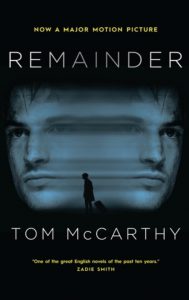
Remainder
It all began with a book
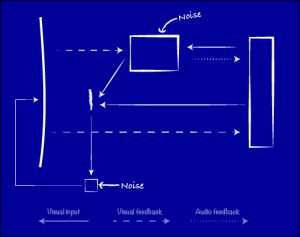
Look into the Camera
A first encounter with technology
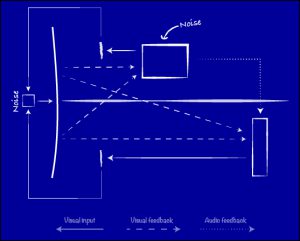
Room Separation
Separation brings us together
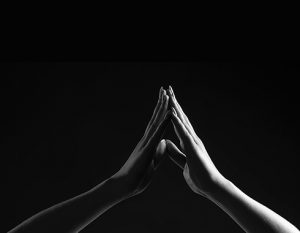
Teaming Up
Looking at others works
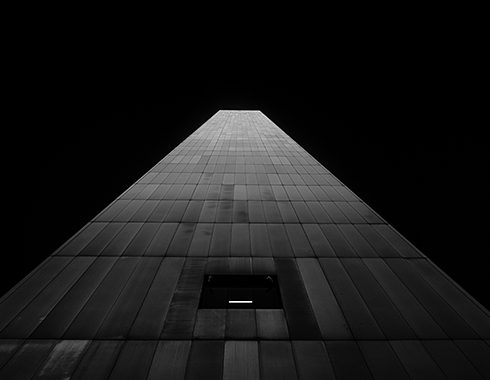
The Master Mind
An architecture for the reenactment
